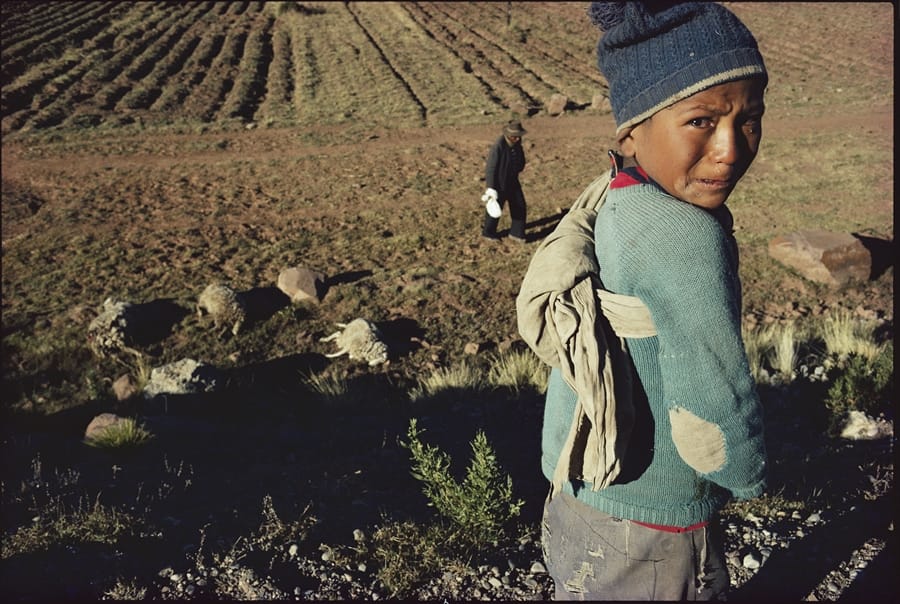Buying to Give
If you’re like most people reading this post, you probably spend some money almost every day. You might pick up a few groceries, pay a bill, or meet a friend for supper. Amazingly, you can turn many of these everyday purchases into opportunities to help save lives and reduce poverty in developing countries—without using any of your own money. This post describes a few ways to do it. These approaches aren’t meant to replace any of your regular giving; instead they provide easy opportunities to give even more.
Give Your Rewards
According to the American personal finance talk-show host Dave Ramsey, “there is no positive side to credit card use.” Of course, credit cards can be dangerous to your financial health if not used responsibly. They tempt people to live beyond their means, engage in impulsive consumerism, and accumulate expensive debt. But credit cards can, in fact, be used to do good.
If you have a rewards card that provides cash back, consider giving the cash to an effective charity. I use a rewards card for many of my everyday purchases. Last year those purchases generated $235 in cash back rebates. Instead of keeping that money for myself, I gave it to the Against Malaria Foundation. According to The Life You Can Save’s Impact Calculator, that $235 will fund the purchase and distribution of 78 bed nets, protecting 141 people from malaria for three to four years. To me (and to those 141 people), that sure sounds like a positive side to credit card use.
Granted, there are costs to society associated with credit card use: merchants that accept credit cards must pay fees to the credit card providers, and those fees are passed on to consumers in the form of higher prices for everyone. But credit cards aren’t going away: the total value of credit card transactions worldwide in 2012 amounted to nearly US $70 billion. Why not use the system to do good?
If you don’t have a credit card or have trouble controlling your spending when you use one—or if you have a rewards card gives you points (e.g., for airline travel) instead of cash—you may prefer one of the other options below.
Give through Amazon
 Photo Credit: Daniel Foster, used under Creative Commons License
Photo Credit: Daniel Foster, used under Creative Commons License
For many people, the multinational online merchant Amazon has become the default place to shop online. More than 270 million individuals worldwide have Amazon accounts, and the company sells more products than its 10 largest online competitors combined. It has also generated its share of controversy over issues such as tax avoidance, poor treatment of employees, and the demise of local bookstores.
If you shop at Amazon, even occasionally, you can make Amazon give money to a charity every time you buy something. There are several ways to do this, but the one with the largest impact involves shopping via an affiliate link that provides commissions to a specific charity, amounting to nearly 5% on most items purchased. In contrast, the Amazon Smile program (available in the United States) provides only 0.5%.
The Life You Can Save recently established an affiliate link with Amazon that provides 0.5% to the charity of your choice via Amazon Smile plus 4-5% to The Life You Can Save. If you bookmark this link and shop at Amazon by using the link, you’ll help support The Life You Can Save and another charity of your choice while making your purchases.
Does it work? Based on another organization’s experience, the answer is yes. In 2014, the effective altruist non-profit Charity Science set up affiliate links with Amazon, in all the countries where Amazon operates the affiliate program. According to Tom Ash of Charity Science, the link generated $500 in the first two months with barely any promotion, and shows no sign of slowing down. The commission goes to Charity Science, which has a policy of regranting all of the money it receives to top charities. This means that all the Amazon commissions get passed through to the Schistosomiasis Control Initiative (SCI), one of The Life You Can Save’s recommended charities. The Life You Can Save’s Impact Calculator shows that the initial $500 raised will protect 625 children from parasitic worms for one year.
To earn SCI the 5% commission on your purchases, you can bookmark the direct Charity Science Amazon link and use it whenever you shop. Or you can install one of the browser plugins (available here for Google Chrome, Firefox, and Safari) created for Charity Science by their enthusiastic volunteer coders on their own initiative. The plugins enable the commission whenever you use Amazon, even if you don’t arrive via the Charity Science link.
As a consumer, you don’t pay a higher price to Amazon when you order through these affiliate links. Instead, Amazon pays a sales commission to The Life You Can Save or Charity Science because the organizations are promoting its link—and thus promoting Amazon.
Now consider this: if you use a rewards credit card for your Amazon purchases (and donate the rewards) while also buying via one of these affiliate link, you can do the most good possible through your everyday purchasing—at no cost to yourself.
Give as you Live
 Photo Credit: Andrew Stawarz, used under Creative Commons License
Photo Credit: Andrew Stawarz, used under Creative Commons License
Amazon isn’t the only company that can make a donation every time you buy something. Other online and physical stores provide a similar service. A good example is the UK-based Give as you Live, a site that lets you comparison shop from thousands of online retailers. Similar to the commission paid by Amazon to Charity Science, Give as You Live receives affiliate commissions from its participating retailers. It passes at least 50% of each commission on to the charity of the consumer’s choice. Several of The Life You Can Save’s recommended charities (such as the Schistosomiasis Control Initiative, Oxfam, and Seva) can be supported through Give as You Live. Again, if you use a rewards card (and donate your rewards) for purchases through sites like this, you can do even more good.
Buy from Companies with a Conscience
There’s yet another way to do good while shopping, although in terms of effectiveness it may rank further down the scale. A growing number of merchants pledge to donate a portion of their profits to charities of their choice. For example if you need a new pair of socks, you could consider buying from Bombas Socks, which donates one pair of socks to homeless shelters for every pair purchased. Or if you happen to want a leather satchel, consider buying from Obazzië Classics, which sends school supplies to children in Africa for each satchel sold. For every pair of glasses bought from TOMS Eyewear, TOMS helps SEVA restore sight to a person in need through its One for One partnership. These companies (and dozens of others like them) support causes they choose; you don’t have a say in the matter. But if you are planning to buy socks or a satchel anyway, companies like these offer a way to do some good in the process. Just think it through carefully: if these products are more expensive than those sold by less “virtuous” companies, you might do more good by buying the cheaper product and donating the difference to an effective charity. Again, you can increase your impact if you buy from these merchants using a cash rewards card and then give your rewards to one of The Life You Can Save’s recommended charities.
The Bottom Line
These strategies for augmenting your giving won’t help much if you use them as an excuse to buy more stuff than you would otherwise, simply as a way to increase your donations. If you have money to spare and want to give more, give that money directly to charities. But if you work these strategies into your normal everyday shopping, you’ll be able to supplement your giving at no cost to yourself. It’s a painless opportunity to do even more good.



